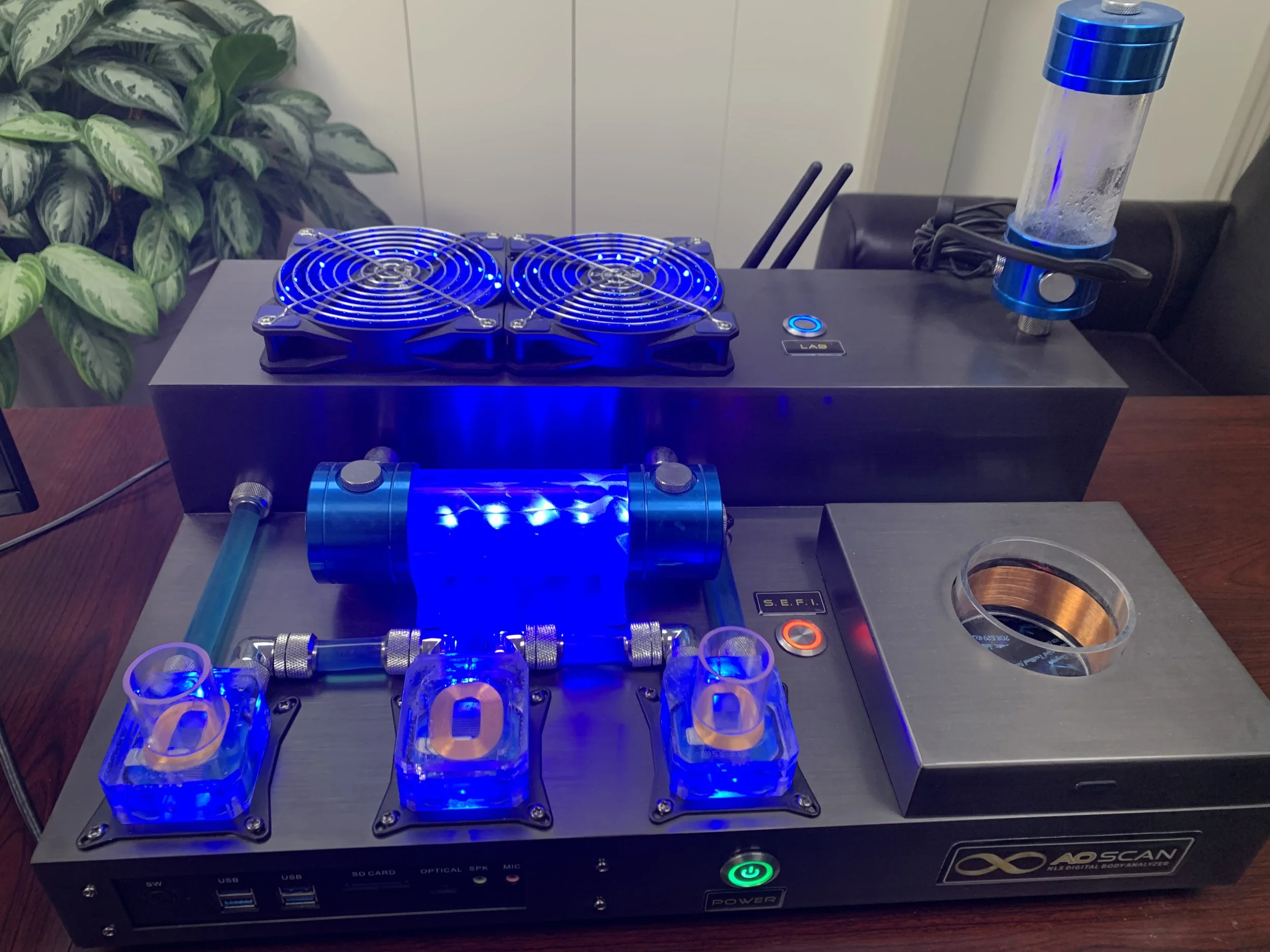AO Scan
Digital Body Analyzer
The AO Scan NLS Digital Body Analyzer combines technology from Russia, Germany, Spain, Asia, and the USA. Most if not all of this technology is based on the works of Nikola Tesla, Dr. Royal Rife, Albert Einstein, and others that realized that everything physical at its most fundamental level is energy frequencies
Biophysicists in Russia pioneered identifying specific frequencies in the human body and amassed a database of more than 120,000 different frequencies. These frequencies are the same in every person.
Medical researchers in Germany found that the health of an organ, tissue, and system or cell structure within the body can be determined by passing microcurrent frequencies and measuring the current's resistance.
The AO Digital Body Analyzer is designed and built upon these technologies utilizing today's technology to make the processes faster, more accurate, and unable to be influenced intentionally or unintentionally by the operator. This last feature in itself is a significant step forward in technology.
The three primary techniques used in the AO Scan NLS System are:
Bio-Resonance Recognition - This process transmits a specific signal from the brain through a pair of small transducers placed in the front of each ear into the NLS. This enables the brain to identify which part of the body is being scanned.
Bio-Resonance Comparison - This process receives the resonating frequency of the part of the body selected from the brain. It is then compared to a known homeostatic frequency that the selected organ, tissue, etc., should be vibrating if healthy.
Then it compares the two frequencies, calculates how close they are to each other, and assigns a number from 1 to 9, with five being in perfect harmony and a higher or lower than 5 indicating either stress or under activity.
Sympathetic Vibratory Physics - This process involves sending a Sympathetic Vibration back into the body to encourage the organ, tissue, etc., that is not within their homeostatic range to move back towards the ideal range.


